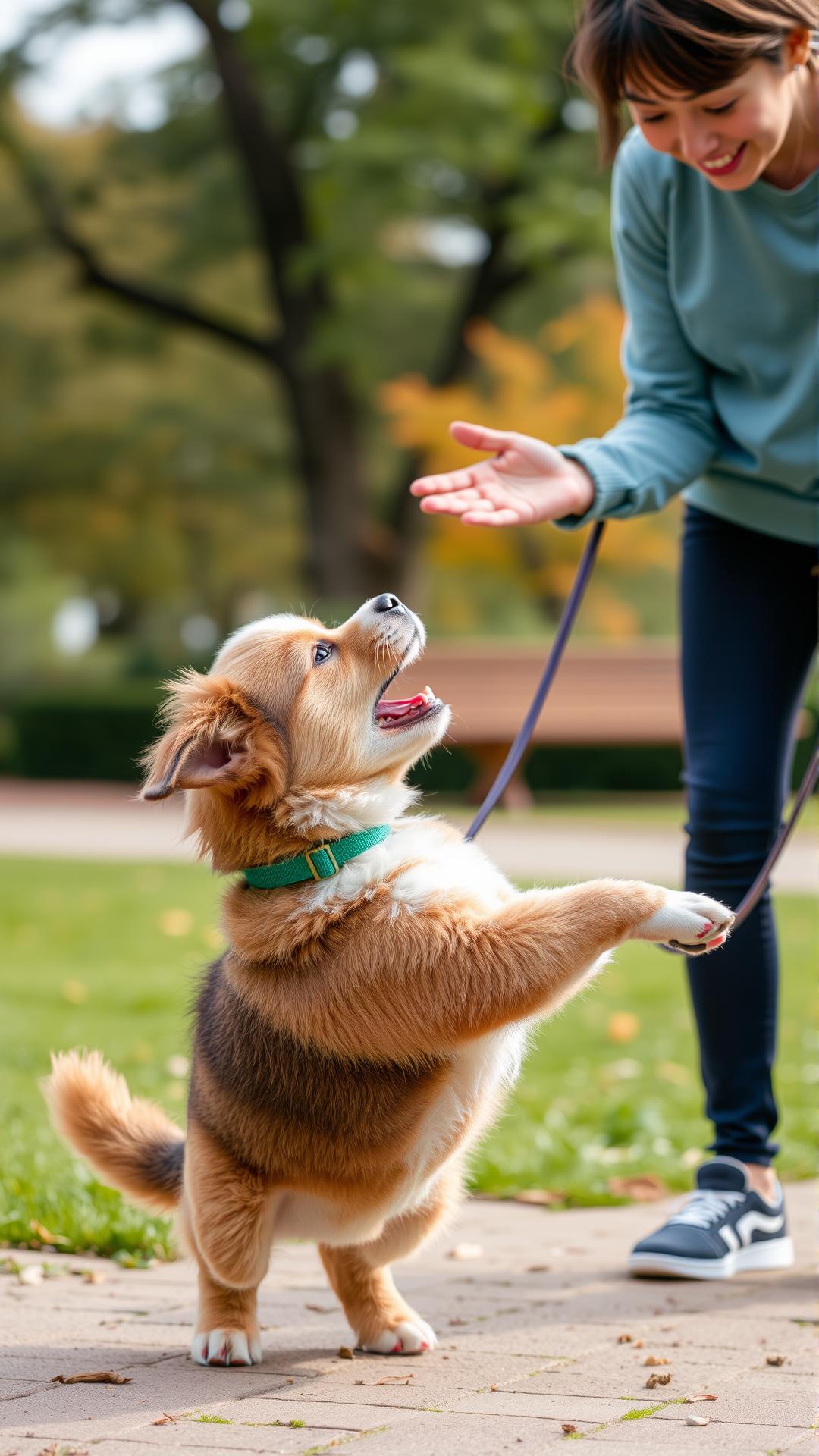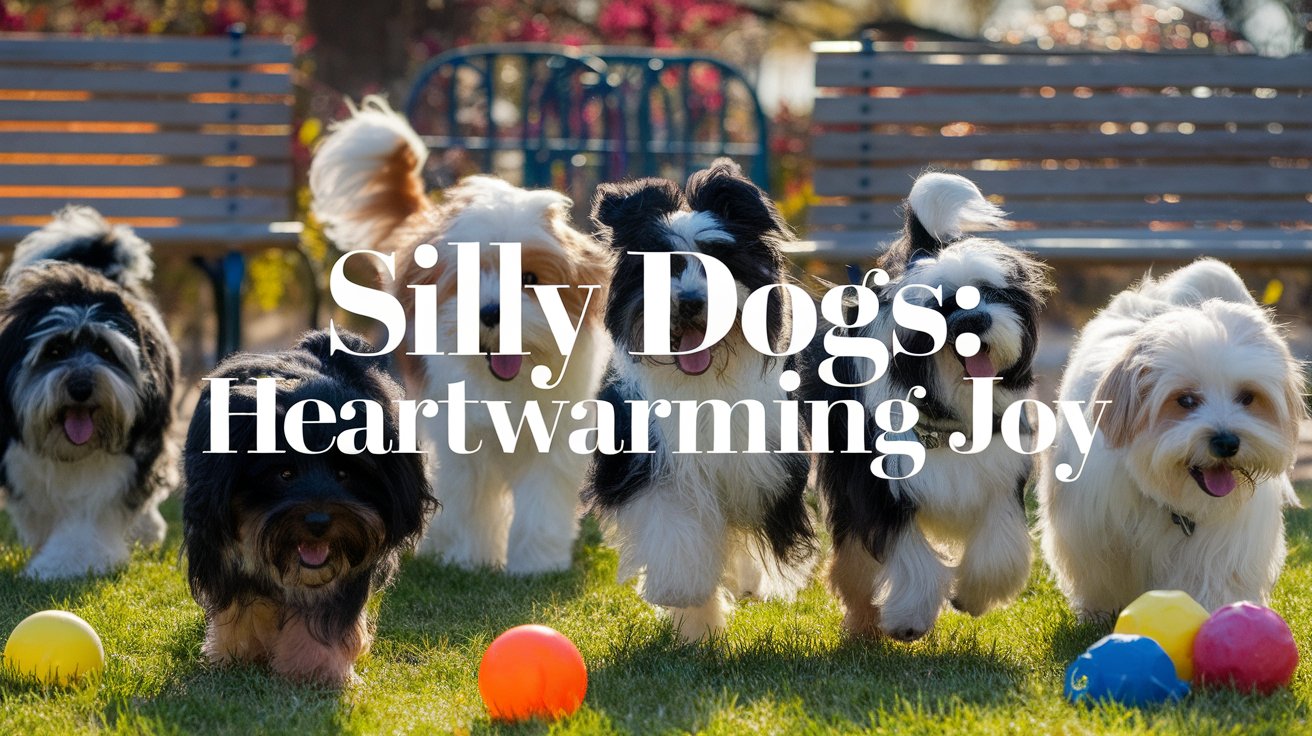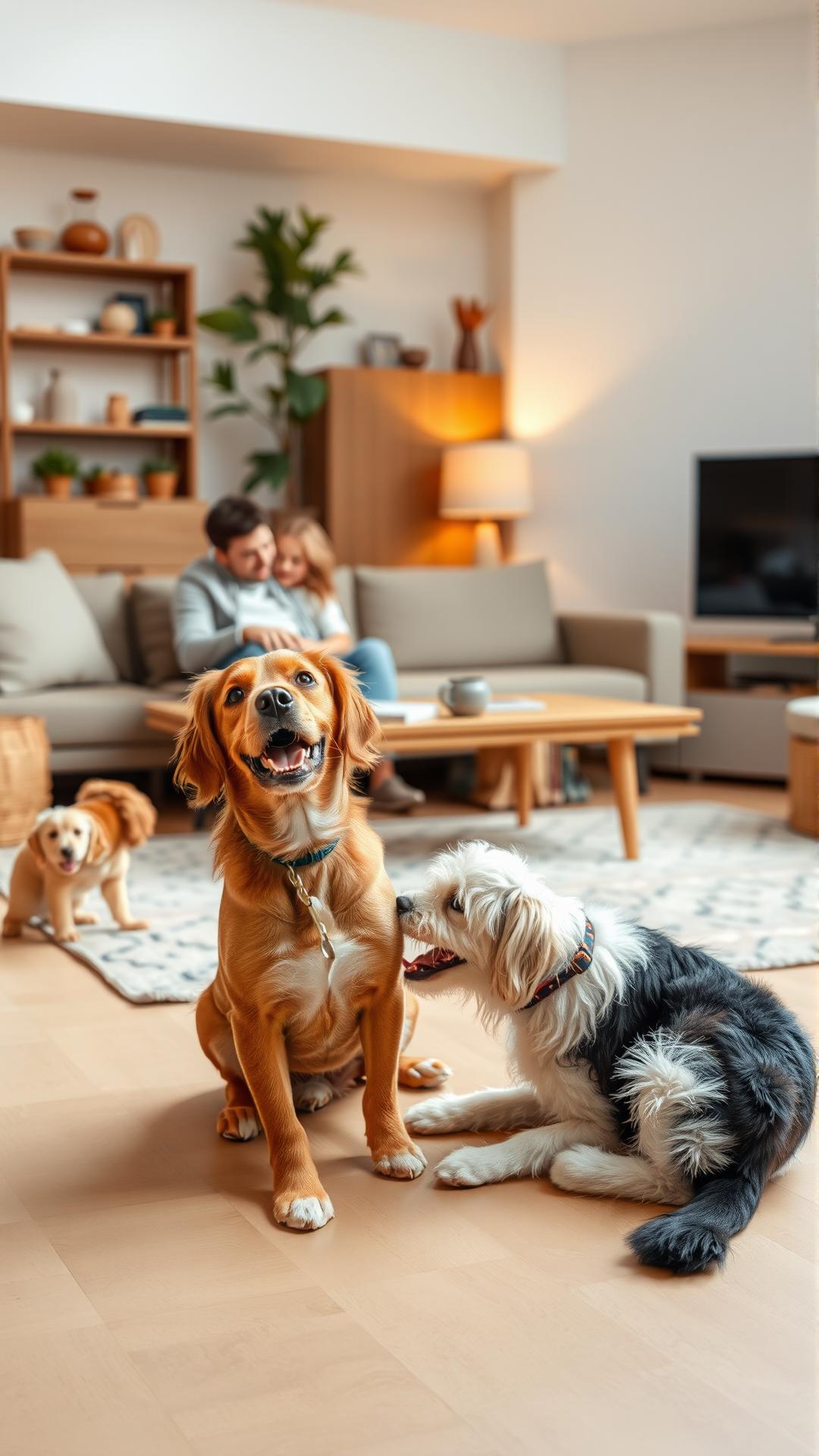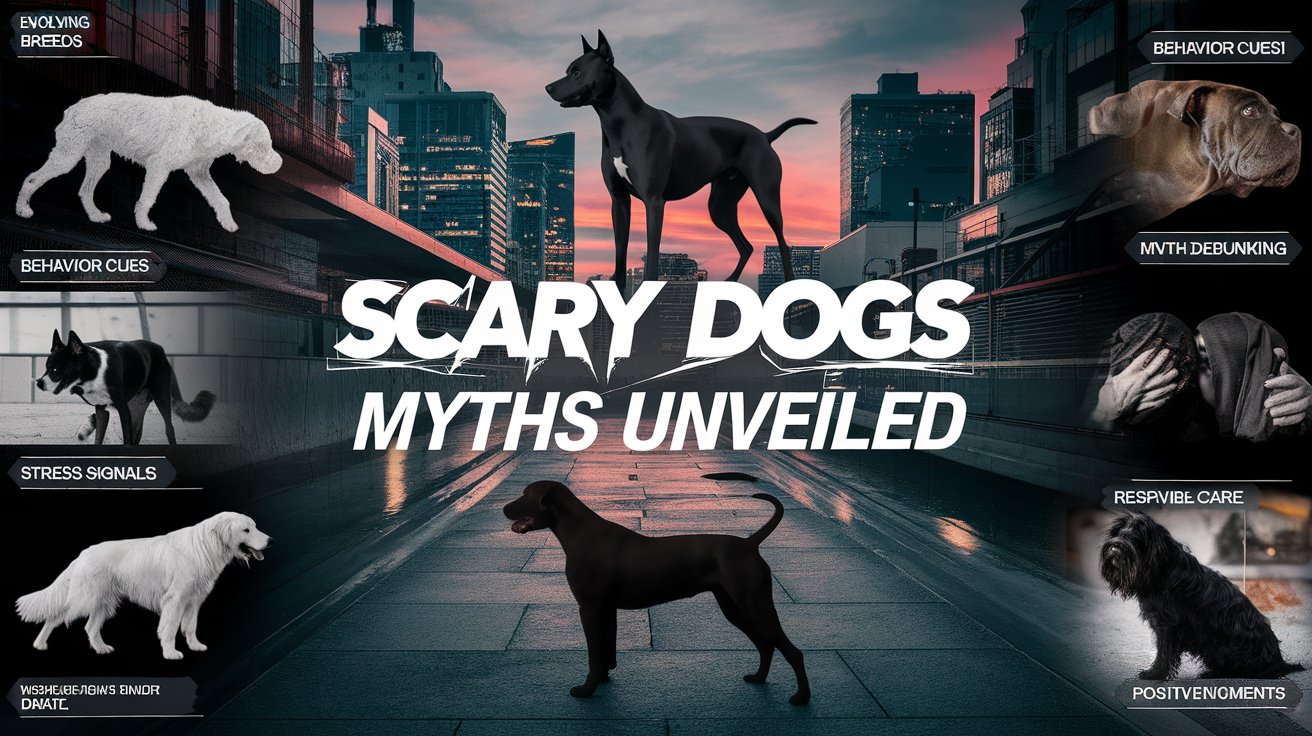Introduction
Cute dogs and puppies bring immense joy and companionship into our lives. Understanding their communication is crucial for establishing a harmonious bond between pets and their owners. As these lovable creatures have complex ways of expressing their emotions, learning to interpret their signals and cues is fundamental. This article explores effective communication methods that can enhance the relationship between you and your furry friend, focusing on both visual and auditory signals.
Dogs have co-evolved with humans, developing unique ways to communicate their needs and feelings. Their communication includes body language, vocalizations, and even scent, ensuring they can express themselves effectively. By delving into the topics of dog body posture, vocal sounds, and social cues, we aim to equip you with the skills needed to nurture a happy home for your cute dogs and puppies. Understanding these elements can significantly improve your interactions and create a more fulfilling pet ownership experience.
The Unique Bond Between Humans and Dogs
The relationship between humans and dogs is one of the most profound connections in the animal kingdom, rooted in thousands of years of shared history. Dogs, believed to have descended from wolves, were among the first animals to be domesticated, which has significantly influenced their communication styles and emotional ties with humans. This ancient bond was initially forged through mutual benefits—humans provided food and companionship, while dogs offered protection, hunting assistance, and loyalty.
Over generations, selective breeding has transformed the wolf into a wide variety of dog breeds, each exhibiting unique physical traits and personalities. This adaptation not only shaped their appearance but also refined their ability to communicate with humans. Dogs have become expert interpreters of human emotions, equipped with a sophisticated system of vocalizations, body language, and facial expressions that closely correspond to human social cues.
The emotional connection between dogs and humans is as vital for the wellbeing of both species as it is for nurturing happy homes. Dogs respond to human emotions with remarkable sensitivity; for instance, when a human displays sadness, a dog may respond with physical comfort, providing support with a gentle nudge or a quiet presence. This empathetic response fosters deeper bonds, creating homes filled with joy and companionship.
The importance of this unique bond also reflects in the way humans engage with their furry companions. Understanding canine communication encourages a more harmonious environment. Simple actions, such as maintaining eye contact or using a soothing tone, can affirm the dog’s feelings and strengthen the emotional connection. Moreover, social interactions, whether they involve shared playtime or training exercises, lay the groundwork for trust and affection.
This interconnectedness is essential for both parties. A dog’s ability to communicate effectively means they can express their needs, desires, and discomforts clearly. Conversely, humans who actively engage and respond to these signals experience increased happiness and companionship. In nurturing this bond, pet owners not only create a loving home for their dogs but also promote a fulfilling relationship that enhances the lives of both species.
Decoding Dog Body Language Understanding Your Pets Signals
Essential Insights into Dog Communication
For the many devoted pet owners, understanding a dog’s body language is crucial in nurturing a happy home. Dogs communicate not just through barks and howls, but more significantly through their posture, tail positioning, and facial expressions. By witnessing these signals, one can better comprehend their furry friend’s emotional state, leading to a stronger bond.
The dog’s posture can be a clear indicator of their feelings. For example, a dog that stands tall with a proud chest and head held high may be feeling confident, while a dog that crouches low to the ground, with their tail tucked, could be expressing fear or submission. Owners should pay close attention to these cues, as they often represent the dog’s immediate emotional wellness. Additionally, a playful posture, characterized by a bowed front end and raised hindquarters, signals an invitation to play and shows that the dog is feeling happy and relaxed.
The position of a dog’s tail serves as another vital communication tool. A wagging tail, especially when held high, usually indicates excitement or happiness. However, if the tail is stiff and held upright, this can signify tension or alertness. Conversely, a low-hanging tail can indicate anxiety or sadness. Recognizing these variances enables owners to respond appropriately. For instance, if a dog’s tail wags vigorously while approaching someone, it often means the dog is eager to interact. Conversely, if the tail is tucked, it may be best to approach calmly and avoid overwhelming them.
Facial expressions also play a significant role in a dog’s emotional landscape. A relaxed face, with eyes soft and ears in a neutral position, is a sign of comfort. In contrast, a tightly closed mouth, intense gaze, or pinched expressions may point to stress or unease. Understanding these subtle signals allows owners to adjust their interactions accordingly, ensuring that their pets are not placed in uncomfortable situations, which can lead to anxiety or aggression.
By learning to recognize and interpret these body language signals, dog owners can foster happier, healthier relationships with their pets. This understanding not only enhances the bond but allows each pet to feel secure and understood in their environment, paving the way for a more harmonious coexistence.
Vocalizations What Your Dog Is Saying
Understanding Your Pet’s Sounds
Dogs communicate through various vocalizations, each carrying distinct meanings that can help owners better understand their furry companions. Recognizing and interpreting these sounds is essential for nurturing positive relationships in happy homes. The primary vocalizations include barking, whining, and growling, each reflecting a dog’s emotions and needs.
Barking is one of the most noticeable sounds dogs make. A quick, sharp bark may signal alertness or excitement, while a series of barks may indicate playfulness. On the other hand, a low, prolonged bark often communicates a warning or the presence of a stranger. Understanding the context of the barking is crucial; for instance, barking at passing cars might signify territorial instincts. A dog that barks excessively may feel anxious or bored, indicating a need for more stimulation or exercise.
Whining can be a dog’s way of expressing various emotions, ranging from anxiety to excitement. Soft whining, particularly when your pet is seeking attention or a cuddle, is often a request for closeness and comfort. If the whining escalates when the owner is leaving, it may signal separation anxiety. Recognizing these nuances in whining can enhance the human-dog bond significantly. Owners should respond gently to comfort their pets, ensuring that the dog’s needs are understood and met.
Growling, often perceived as aggressive behavior, can also convey other emotions. Dogs may growl in play, showing they are excited and engaged. However, a growl can also reflect discomfort or fear, especially when paired with defensive body language. It’s essential for pet owners to distinguish between the playful and defensive growls by observing the dog’s overall demeanor. A relaxed body posture and wagging tail during a growl indicate playfulness, whereas a tense body and raised hackles suggest that the dog feels threatened.
Interpreting vocalizations is a vital aspect of understanding your pet’s feelings and needs. By paying attention to your dog’s sounds and incorporating observations from their body language, owners can create a nurturing environment that promotes happiness and well-being. This enhanced communication fosters deeper connections and allows for more effective training approaches, paving the way for a harmonious cohabitation.
Social Cues Communicating with Humans in Cute Dogs and Puppies
Understanding how cute dogs and puppies communicate with humans is vital for establishing enriching and harmonious relationships. The ways these adorable companions use social cues significantly influence training, bonding, and overall happiness within the home. Dogs have evolved alongside humans, and their communication methods have adapted to enhance their interactions with us.
Eye Contact: A Window to the Heart
Eye contact is one of the most powerful social cues in a dog’s repertoire. When a dog gazes into a human’s eyes, it often signals trust and affection. This connection can release oxytocin, often referred to as the “love hormone,” in both the dog and the human. However, the context of eye contact matters; prolonged stares from a dog can appear threatening if not framed correctly. Encouraging soft, gentle eye contact during training sessions can foster a feeling of safety and cooperation.
Gestures: The Language of Movement
Dogs are also keen observers of human gestures. Whether it’s pointing, waving, or specific body movements, dogs are adept at reading these signals. For instance, when a human points to a toy, a dog may respond by retrieving it. Positive reinforcement can enhance this understanding, as reacting to a gesture with praise encourages the behavior. Training that incorporates visual cues alongside verbal commands can greatly enhance communication between humans and their furry friends.
Personal Space Preferences: Understanding Boundaries
Each dog has its own comfort level regarding personal space, which is crucial for positive interactions. Some dogs enjoy close proximity and physical affection, while others may prefer to maintain a certain distance. Observing how a dog reacts in various scenarios can help owners determine their pet’s comfort zones. For example, a dog that leans into a person is likely seeking closeness, whereas one that moves away may require more space. Respecting these preferences not only strengthens trust but also enhances training effectiveness.
Incorporating an understanding of social cues into daily interactions ensures that the unique language of dogs and puppies is recognized and respected. This fosters an environment of mutual respect, love, and happiness, ultimately leading to a well-integrated family life that reflects both human and canine needs.
Scent Communication The Unseen Language of Dogs
When it comes to communication, dogs possess a remarkable ability that goes beyond mere vocalizations or body language. This ability lies within their acute sense of smell, allowing them to gather a wealth of information from their surroundings. The way dogs communicate through scent forms an integral part of their interaction with both the environment and other animals. Understanding this unseen language can deepen the bond between humans and their canine companions, fostering a more harmonious home.
How Dogs Utilize Their Sense of Smell
Dogs have approximately 220 million scent receptors in their noses, compared to the mere 5 million that humans have. This incredible sense of smell enables dogs to detect and interpret various scents, offering them insight into their world. For instance, when a dog sniffs a specific spot, they are often gathering information about other animals that have been there, their health, gender, and even their emotional state. This olfactory communication forms the basis of social interactions among dogs, guiding behaviors such as greeting, playing, or displaying submissiveness.
The Role of Scent in Social Interactions
In social situations, dogs express themselves through scent-marking behavior, which is essential for establishing territory and social hierarchies. Both male and female dogs will often mark their surroundings with urine to communicate their presence and attract potential mates. This scent-marking serves as a conversation starter among dogs, allowing them to understand various aspects of one another’s lives, from their reproductive status to health. Moreover, this olfactory information can lead to positive social interactions, as dogs can assess compatibility based on scent alone.
Understanding scent communication can enhance the way pet owners engage with their dogs. Providing opportunities for sniffing during walks not only stimulates a dog’s natural instincts but also offers them valuable information about their environment. Allowing your dog the time and space to explore these scents can lead to a more fulfilling experience, which in turn can promote well-being and happiness at home.
Recognizing the significance of scent in a dog’s life enriches your relationship. By facilitating an environment where scent exploration is encouraged, pet owners can promote a deeper understanding and appreciation of their furry friends’ unique forms of communication, nurturing a happier household for both humans and dogs alike.
Creating a Positive Communication Environment for Cute Dogs and Puppies
Fostering Effective Interaction through Understanding
Creating a harmonious home with your cute dog or puppy involves establishing a positive communication environment. Just like human relationships, the bond between you and your pet thrives on clear and open interaction. The journey begins with patience. Dogs and puppies are continually learning, and their unique personalities require time to understand. Embrace the nuances of their behavior and appreciate that they might not grasp commands or cues immediately. This patience fosters trust, allowing your pet to feel secure and willing to engage in communication.
Understanding is your next step in nurturing this relationship. Dogs communicate through a combination of vocalizations, body language, and even facial expressions. Take the time to observe your pet’s signals: a wagging tail usually indicates excitement, while a lowered head might denote submission or fear. Recognizing these signs allows you to respond appropriately, reinforcing positive behaviors and addressing concerns. For instance, if your puppy barks at visitors, understanding this behavior as a sign of alertness can guide you in teaching them how to greet newcomers calmly.
Tailoring Communication Styles
No two dogs are alike, and their communication styles can vary greatly depending on their breed and individual personality. A Great Dane might have a very different approach to communication than a cute small dog, reflecting their unique characteristics. Therefore, adjusting your communication style to suit your pet is vital. Some dogs respond better to soft tones and gentle gestures, while others might thrive on assertive commands. Tailoring your approach to align with your dog’s nature not only makes training more effective but also enhances the emotional bond you share.
Positive reinforcement is a cornerstone of effective communication. Celebrate small victories with treats, praise, or playtime to encourage behaviors you wish to cultivate. This technique not only teaches your dog what is expected but also reinforces your relationship, fostering a joyful atmosphere. When your puppy sits on command and you respond with excitement, they learn that good behavior brings rewards, reinforcing a circle of communication that keeps your home happy and harmonious.
The key to a nurturing relationship lies in patience, understanding, and adaptability. By creating an environment where communication flourishes, you and your cute dog or puppy can navigate the joys and challenges of life together, ensuring a fulfilling partnership for years to come.
Conclusions
Effective communication is the cornerstone of a happy and fulfilling relationship with your cute dogs and puppies. By being attentive to their body language, vocalizations, and emotional expressions, pet owners can create a nurturing environment that fosters trust and companionship. The way dogs communicate is not just informative but also a reflection of their unique personalities and connections with their human counterparts.
Implementing the communication tips discussed throughout this article will lead to deeper understanding and harmony in your home. Happy pets mean happy homes, and when we learn to listen to our dogs, we can develop a bond that lasts a lifetime. By promoting positive interactions and mutual respect, both you and your furry friends will enjoy a happier, healthier relationship.


















